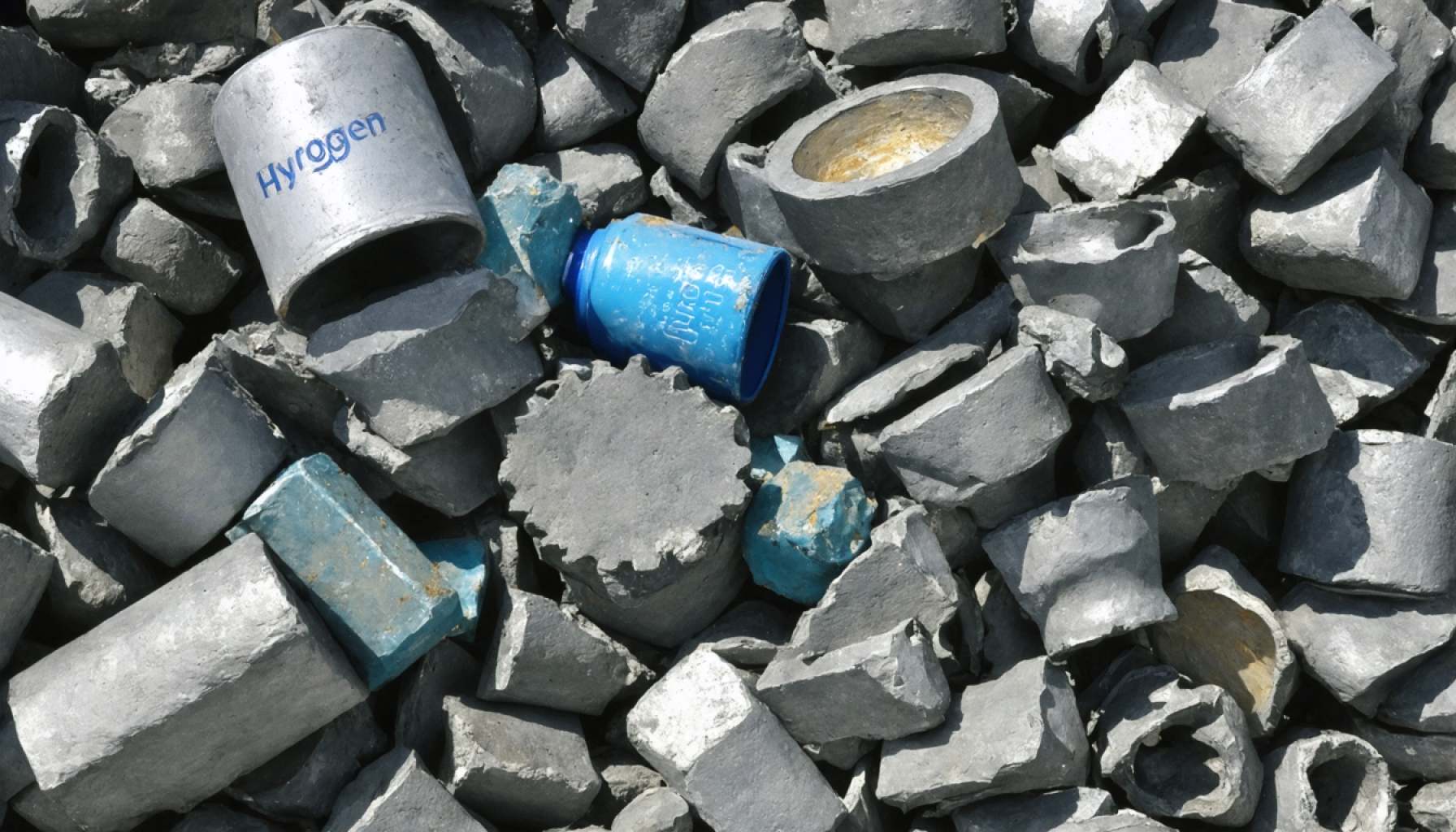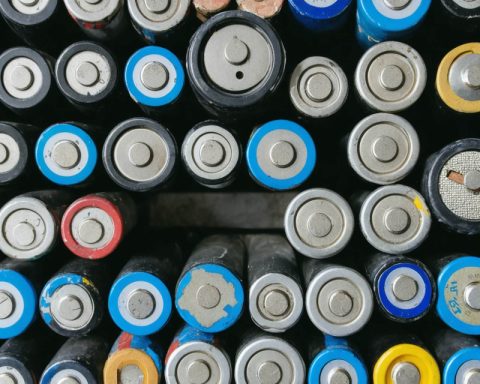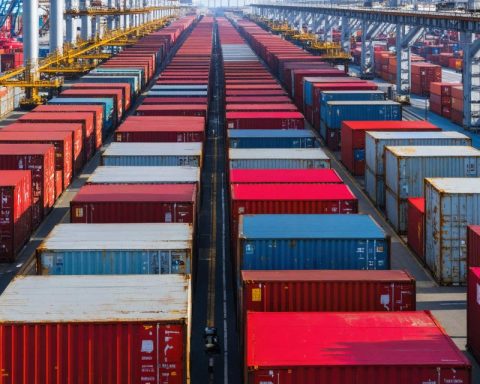- The recycling plant in Warrington is pioneering a sustainable method using hydrogen to transform aluminum recycling.
- Novelis has developed an innovative blend of hydrogen and natural gas, testing mixtures from 30% to 100% hydrogen for aluminum processing.
- Hundreds of tonnes of 3000 series scrap aluminum were successfully processed using hydrogen-fed furnaces, indicating a potential shift in industry practices.
- The tests demonstrated significant potential for reducing environmental impact while maintaining high product quality.
- This approach represents a promising advance toward greener industrial methods and supports global sustainability efforts.
- Novelis’s achievement not only benefits Warrington but also sets an example for global adoption of eco-friendly technologies.
A fiery transformation unfolds at a recycling plant in Warrington, where innovation meets environmental sustainability. There, a powerful alchemy drives the furnaces that fuel the future. Novelis, a visionary in metal recycling, has unlocked a groundbreaking method to breathe new life into aluminum using an element that promises a cleaner tomorrow: hydrogen.
Against the relentless clamor of the industrial heartland, this alchemy isn’t magic—it’s science. Novelis has meticulously crafted a symphony of hydrogen and natural gas, testing blends ranging from 30 to a striking 100 percent hydrogen. These transformative tests weren’t merely experiments; they were a bold inquiry into the alliance between cutting-edge technology and existing infrastructures. This new dance of elements promises not just to reshape aluminum but to redefine sustainable industry practices.
Hundreds of tonnes of scrap aluminum from the 3000 series found their way into the eager embrace of these hydrogen-fed furnaces. As molten metal flowed and cooled into sheet ingots, each piece bore testimony to the experiment’s success. Amid the hiss of cooling metal and the shimmer of newly minted ingots, experts meticulously measured environmental impact, product quality, and emissions. The verdict? A harmonious convergence where sustainability and industrial might can coexist.
As the world grapples with climate change and seeks paths to sustainability, Novelis’s hydrogen-powered approach offers a beacon of hope. With each ignited furnace, our journey toward a greener industry becomes undeniably tangible. This bold leap forward isn’t just a triumph for Warrington; it’s a call to reimagine what’s possible when innovation fuels our ascent toward an eco-friendly horizon.
Revolutionary Hydrogen-Powered Recycling: The Future of Eco-Friendly Aluminum Production
How Hydrogen is Transforming Aluminum Production
Novelis’s recent breakthrough in aluminum recycling using hydrogen is setting a precedent for industries looking to minimize their carbon footprint. By integrating hydrogen into traditional recycling processes, Novelis is reducing greenhouse gas emissions and increasing efficiency, all while maintaining product quality.
How-To Steps & Life Hacks
1. Managing Hydrogen Supply: For companies looking to explore hydrogen, securing a stable hydrogen supply via electrolysis plants or hydrogen gas suppliers is crucial.
2. Blending Fuels: Transition from natural gas to hydrogen involves careful blending and monitoring. Start with a lower percentage of hydrogen and gradually increase while measuring performance and emissions.
3. Technology Integration: Adapt existing infrastructure with new burners, sensors, and controllers to accommodate hydrogen’s unique combustion characteristics.
Real-World Use Cases
Industrial metal recycling provides significant environmental benefits. Applications are most beneficial in sectors like automotive manufacturing, where lightweight, high-strength materials are in demand, and sustainability is paramount.
Market Forecasts & Industry Trends
The global aluminum recycling market, valued at USD 6.49 billion in 2020, is projected to grow at a CAGR of 8.2% from 2021 to 2028 (Grand View Research). The integration of hydrogen in recycling processes is expected to accelerate this growth, contributing to sustainable industry practices.
Reviews & Comparisons
Novelis stands out in the metal recycling industry, given its early adoption of hydrogen technology. Compared to traditional methods, hydrogen-powered recycling showcases a reduction in CO2 emissions and improved energy efficiency.
Controversies & Limitations
Hydrogen infrastructure remains a challenge due to:
– High production costs of green hydrogen.
– Limited distribution networks.
– Safety concerns related to storage and transportation.
Despite these challenges, advancements in hydrogen production and storage, such as those by companies like Linde and Air Liquide, are promising.
Features, Specs & Pricing
– Hydrogen Blends: Tested blends range from 30% to 100% hydrogen.
– Furnace Modifications: Requires specialized burners and controls.
– Cost Implications: Costs can be high initially but may decrease as technology matures and scales.
Security & Sustainability
Novelis’s approach significantly reduces carbon emissions, supporting global sustainability goals. The use of hydrogen aligns with initiatives to achieve net-zero goals by 2050, as outlined by the International Energy Agency.
Insights & Predictions
Experts predict a wider adoption of hydrogen recycling in industries as the technology matures. The transition will stimulate investments into hydrogen infrastructure and innovation.
Tutorials & Compatibility
Integrating hydrogen into existing recycling operations can be complex. Collaborate with technology providers for customized solutions that ensure compatibility and efficiency.
Pros & Cons Overview
Pros:
– Significant reduction in CO2 emissions.
– Improved energy efficiency.
– Aligns with global sustainability goals.
Cons:
– High initial implementation costs.
– Infrastructure and supply chain challenges.
– Safety risks associated with hydrogen.
Actionable Recommendations
– Research and Collaborate: Engage with industry leaders and hydrogen suppliers to explore integration possibilities.
– Incremental Transition: Begin with small-scale trials to measure impact before scaling.
– Invest in Training: Equip personnel with the skills needed for hydrogen technology operation and safety protocols.
Quick Tips
– Leverage government grants and subsidies aimed at promoting green technology.
– Monitor industry advancements by attending expos and networking with key players in the sector.
Additional Resources
For more information on sustainable industry practices and hydrogen technology, visit Novelis.














